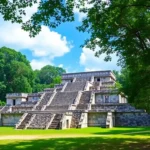Concise Overview of Egypt's History

When we think of Egypt, visions of majestic pyramids, the Sphinx, and ancient pharaohs come to mind. But behind this iconic imagery lies a rich tapestry of history that spans thousands of years, filled with triumphs, tragedies, and a vibrant culture that has shaped not only Egypt but the entire world. In this comprehensive exploration, we will journey through the various historical epochs of Egypt, from its ancient roots to its modern-day challenges, providing a closer look at the events that have defined this fascinating country.
The phrase “Men fear time, but time fears the pyramids” beautifully encapsulates the essence of Egypt’s historical significance. The narrative of Egypt extends back nearly 5,000 years, making it one of the oldest continuous civilizations in the world. While the iconic symbols of this nation are well-known, it is essential to delve deeper into the complex history that has shaped its identity through various eras marked by notable achievements and significant upheavals.
We can clearly delineate four main stages in the history of Egypt:
- Ancient Egypt
- Greco-Roman Period
- Arab Period
- Modern Era
Before we discuss each of these stages in detail, it's vital to understand a crucial element that underpins the entire history of Egypt.
Understanding the Nile: The Lifeblood of Egypt
Herodotus proclaimed, “Egypt is the gift of the Nile,” and this statement underscores the river's pivotal role in the development of Egyptian civilization. Without the Nile, Egypt would merely be a barren desert, devoid of the rich agricultural society that flourished along its banks. The Nile served as a critical lifeline, facilitating trade and agriculture, crucial for sustaining the population.
The annual flooding of the Nile brought nutrient-rich silt to the surrounding land, creating a fertile environment ideal for crops. The predictability of these floods—happening twice a year—allowed the Egyptians to establish a sustainable agricultural system. This abundance led to Egypt being dubbed “the breadbasket of the world” by the Romans. However, the floods also posed a risk, as they could be unpredictable. To manage this, the Aswan High Dam was constructed between 1958 and 1970, fundamentally changing the way water was controlled and distributed throughout the region.
1. Ancient Egypt (c. 3000 BC – 332 BC)
The era of Ancient Egypt is synonymous with pharaohs, monumental architecture, and a rich pantheon of gods. This period is often divided into various dynasties, totaling 33 in number, where rulers from the same lineage governed the land. The significance of this era cannot be overstated; it laid the foundation for many aspects of modern civilization.
Life in Ancient Egypt
The Ancient Egyptian society was primarily agricultural, yet it was also marked by remarkable advancements in various fields such as:
- Mathematics: Egyptians excelled in geometry and algebra.
- Writing: The development of hieroglyphics was a significant achievement, with its mysteries only unraveled in the 19th century through the Rosetta Stone.
- Astronomy: Their understanding of celestial movements was advanced for their time.
During the early days, the pharaoh was revered as a divine entity, seen as the earthly embodiment of the god Horus. Over time, while they lost their divinity, pharaohs retained immense influence and power, supported by a structure of priests, generals, and advisors.
Religion and Deities of Ancient Egypt
Religion played a central role in Egyptian life, characterized by a politeistic belief system that included numerous gods, each representing various aspects of life and nature. Some of the principal deities included:
- Amón: The chief god, creator of the universe.
- Ra: The sun god, often depicted with a falcon head.
- Osiris: God of the afterlife, who guided souls to the underworld.
- Isis: Goddess of motherhood and fertility, wife of Osiris.
- Anubis: The god of mummification, overseeing the dead's journey to the afterlife.
The Dynastic Periods of Ancient Egypt
The Ancient period can be further divided into several critical phases:
Old Kingdom (2635 – 2155 BC)
This era marks the unification of Upper and Lower Egypt, governed by powerful dynasties with Memphis as the capital. It is famously known as the age of the pyramids, with monumental constructions like the Great Pyramid of Giza emerging during this time.
Middle Kingdom (2155 – 1570 BC)
Tebas (modern Luxor) became the capital during this period. Although marked by military campaigns and territorial losses, it was also a time of significant cultural and artistic achievements. The pharaohs began to be viewed as mortal leaders rather than divine figures, leading to new religious interpretations.
New Kingdom (1570 – 1070 BC)
This period saw the restoration of stability and the rise of powerful pharaohs like Hatshepsut, Ramses II, and Tutankhamun. Notably, Hatshepsut was one of the few female pharaohs, and Ramses II is celebrated for constructing magnificent temples. The discovery of Tutankhamun's tomb revealed extraordinary treasures, captivating the world.
Late Period (1070 – 332 BC)
The final stage of the dynasties saw Egypt losing its regional power, with invasions from foreign powers, including the Persians. The arrival of Alexander the Great in 332 BC marked a significant transition in Egyptian history.
2. Greco-Roman Period (332 BC – 641 AD)
Alexander the Great's conquest of Egypt was relatively smooth, as the Egyptians welcomed him in their struggle against Persian rule. Following this, he founded the city of Alexandria, which became a major cultural and economic hub in the Mediterranean.
The Greco-Roman influence permeated Egyptian culture, though it did not completely erase the indigenous traditions. The Ptolemaic dynasty, which included notable figures such as Cleopatra VII, ruled for nearly 300 years. Cleopatra's reign was marked by her alliances with powerful Roman leaders, including Julius Caesar and Mark Antony, which ultimately led to her tragic demise.
3. Arab Period and Colonialism (641 – 1922 AD)
The advent of Islam transformed Egypt significantly after the Arab conquests in 641 AD. The founding of Cairo and the establishment of Islamic governance marked the beginning of a new era. Key figures such as Saladin emerged, known for his leadership during the Crusades.
In 1517, Egypt became part of the Ottoman Empire, leading to a decline in its power. The French invasion led by Napoleon in 1798 introduced a brief period of French influence, followed by British control in the 19th century. In 1922, Egypt gained nominal independence from British rule.
4. Modern Era
In 1952, the Egyptian Revolution led by Gamal Abdel Nasser resulted in the overthrow of the monarchy and the establishment of a republic. Nasser's era was characterized by efforts to modernize Egypt, unite Arab nations, and combat colonial influence.
Following Nasser's death in 1970, Sadat took a different approach, seeking peace with Israel and aligning more closely with Western powers. His peace efforts earned him a Nobel Prize, but also led to his assassination in 1981.
His successor, Hosni Mubarak, ruled until the 2011 revolution, which was part of the broader Arab Spring movement. The revolution was fueled by widespread discontent over economic issues and political corruption.
5. Egypt Today
Today, Egypt is grappling with the legacies of its tumultuous past. The current government under Abdul Fatah al-Sisi has faced criticism for alleged human rights abuses and suppression of dissent. While some view him as a stabilizing force, many others express frustration over the lack of political freedoms and ongoing economic challenges.
The hopes of the Egyptian people for a stable and truly democratic society remain unfulfilled. The struggle for rights and freedoms continues, as the nation strives to find its place in a rapidly changing world.
Throughout this extensive journey through Egypt's history, we see a civilization that has continuously evolved, shaped by its geography, culture, and the resilience of its people. The echoes of its past resonate in the present, offering invaluable lessons for future generations.
For a visual exploration of this captivating history, consider watching this insightful video on the subject:
As we reflect on this (not so brief) overview of Egypt’s history, it is evident that the narrative of this remarkable country is far more intricate than its iconic landmarks suggest. It is a story of resilience, creativity, and the enduring spirit of a nation that has captivated the world for millennia.
| Save on your trip |
| Compare and find cheap flights here |
| Find accommodation at the best prices here |
| Book activities and tours in Spanish here |
| 5% discount on your travel insurance from IATI here |
| Book airport transfers here |
| Find out how to withdraw money without fees here |
| 5% discount on your eSIM from Holafly here |
| The best books and travel guides here |
| All our articles about Egypt |
* Photocredit: Shutterstock






Deja una respuesta